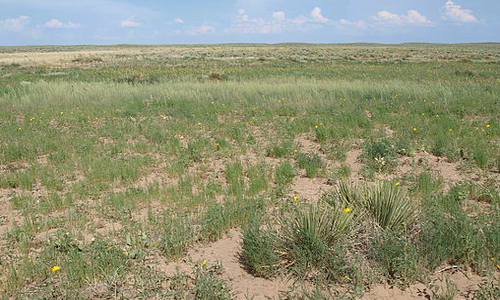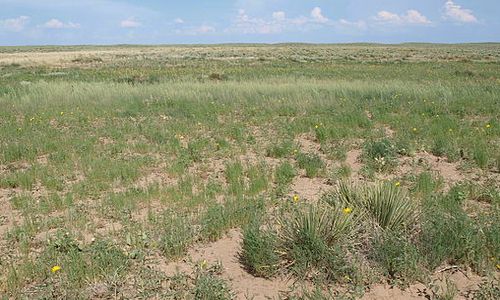
Geographers Identify Huge Sources of CO2 Buried in Soil of the Great Plains

Geographers in the U.S. have found a new factor in the carbon cycle, and—all too ominously—a new potential source of the greenhouse gas carbon dioxide (CO2). They have identified huge deposits of fossil soils, rich in organic carbon, buried beneath the Great Plains of America.
The discovery is evidence that the subterranean soils could be a rich store, or sink, for ancient atmospheric carbon. But if the soil is exposed—by erosion, or by human activities such as agriculture, deforestation or mining—this treasure trove of ancient charred vegetation, now covered by wind-blown soils, could blow back into the atmosphere and add to climate change.
Erika Marin-Spiotta, a biogeographer at the University of Wisconsin-Madison, and her colleagues report in Nature Geoscience that what is known as Brady soil—ancient buried soil—formed more than 13,500 years ago in Nebraska, Kansas and other Great Plains states.
Glacial Retreat
It now lies more than six meters below the surface, and it was buried by a vast deposit of loess—wind-blown dust—about 10,000 years ago, when the glaciers began to retreat from North America.
The significance is not that it survived the end of the Ice Age and the colonisation of the Great Plains by grazing animals, but in the fact that it is there at all, at such depths. Calculations about the world stock of soil carbon have focused on the topsoil, and the role of root systems, decaying vegetation, microbes and fungi in the natural carbon cycle. Now the climate scientists who play with models of the carbon cycle will have to think again.
“There is a lot of carbon at depths where nobody is measuring,” said Dr. Marin-Spiotta. “It was assumed that there was little carbon in deeper soils. Most studies are done only in the top 30 centimeters. Our study is showing that we are grossly underestimating carbon in soils.”
The researchers have enough evidence to put together a picture of a stormy past in an almost empty continent. The tract of prairie that now contains the Brady soil was never glaciated. As the glaciers retreated from the rest of the continent, the climate warmed, the vegetation regime changed, and it became scorched by wildfire—“an incredible amount of fire” according to the report’s author.
Thick Band
Before the ash, charred wood and singed fibers and stalks of the prairie grasses could begin to decompose and turn back into CO2, it was covered by the accumulating loess. It now exists as a meter-thick band of dark soil far below the surface—a hidden record of bygone climate.
The researchers calculate that, altogether, there could be as much as 2.7 billion tons of potentially reactive carbon below the Great Plains. And what happened in the Plains, could have happened in many other parts of the world. The implication is that such deposits could exist anywhere, and could just as easily be a potential contributor to global warming if disturbed.
——–
YOU MIGHT ALSO LIKE
Deforestation in Sandy Ecosystems Increase Release of CO2
Researchers Find Trees in Borneo Soak Up More CO2 Than Trees in the Amazon Rainforest
Research Finds Vapors From Coniferous Trees Could Help Slow Global Warming
——–

 233k
233k  41k
41k  Subscribe
Subscribe 
